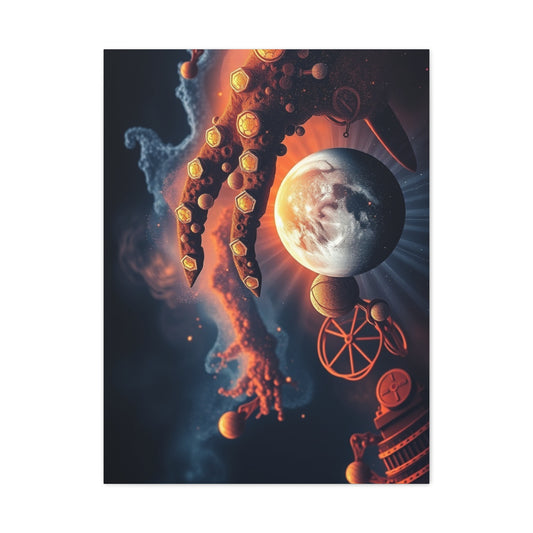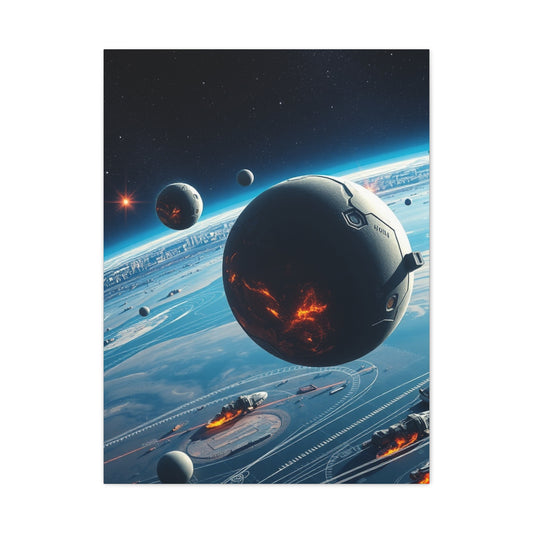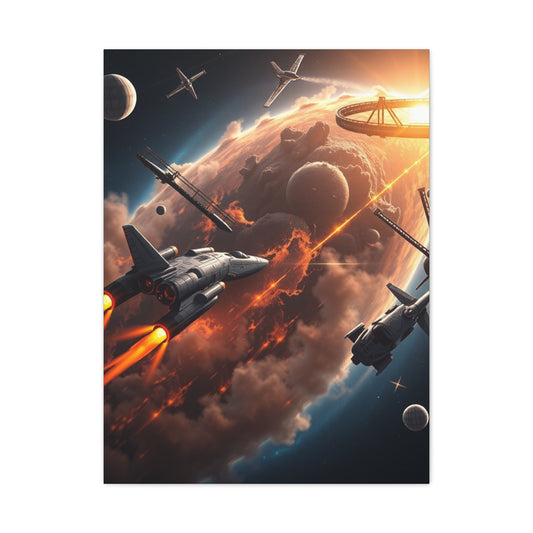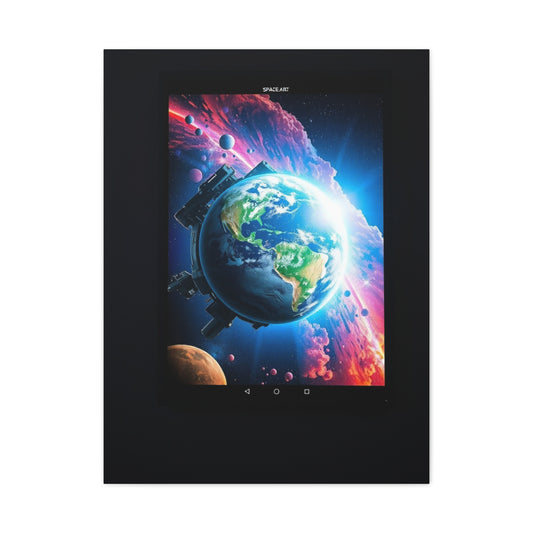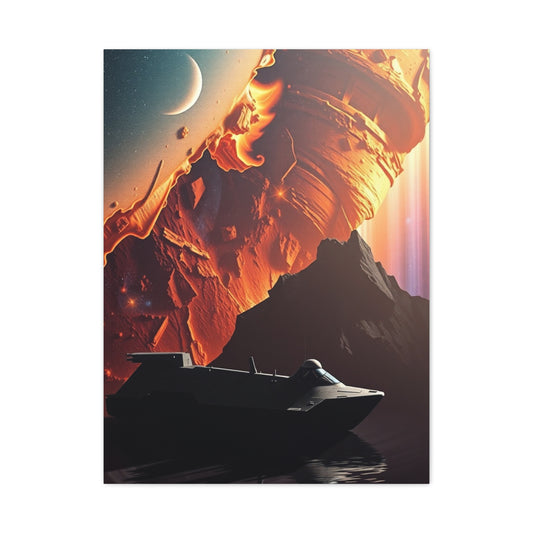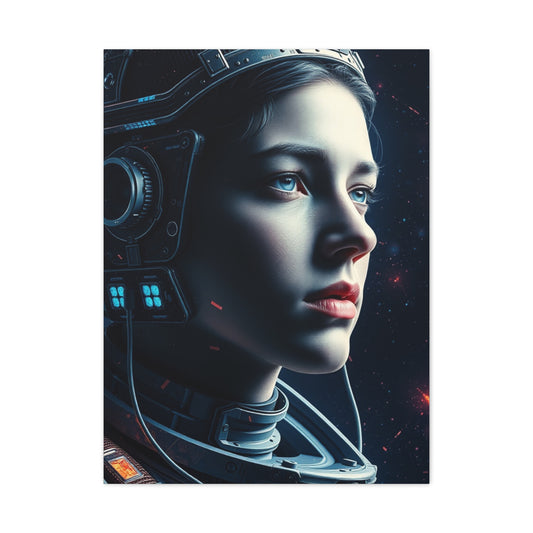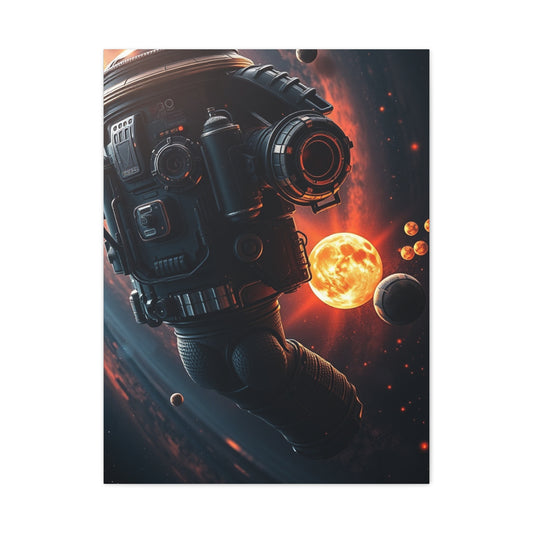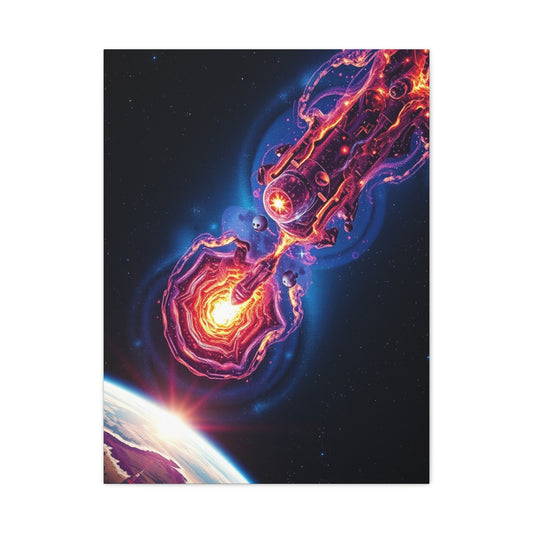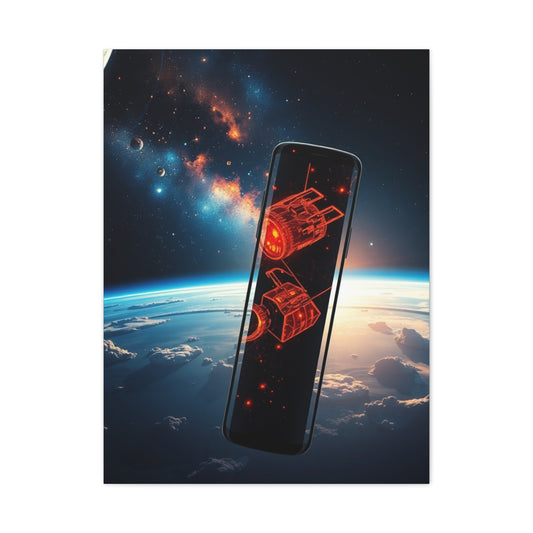Wall Wonders: Art Ideas to Elevate Your Living Space
Refreshing a living space can often feel like a daunting task. The colors of the walls, the furniture arrangement, and the overall aesthetic can influence how a room feels. Yet, one of the most overlooked aspects of home design is wall decoration. Walls are expansive surfaces that can dramatically alter the ambiance of a room when decorated thoughtfully. The right wall art can serve as a centerpiece, convey personal style, and elevate the entire atmosphere. Understanding how to choose, place, and curate wall art is essential for transforming your living room into a space that reflects personality and style.
The concept of using wall art is rooted in the idea that visual elements affect mood, perception, and even productivity. A room with thoughtfully chosen artwork can inspire creativity, provide comfort, and make the environment feel complete. Conversely, rooms with empty or poorly decorated walls may feel unfinished or uninspiring. Integrating wall art allows for a combination of aesthetic appeal and personal expression, bridging the gap between functional design and artistic flair.
Understanding the Role of Wall Art in Interior Design
Wall art is more than just decoration; it is a statement that communicates style, personality, and taste. Art influences how people perceive a space, drawing attention to focal points and enhancing the overall design narrative. In interior design, the use of wall art is multifaceted. It can serve to complement furniture, reinforce a color scheme, or create contrast for visual interest. A carefully curated piece can tie together disparate elements in a room and create harmony among colors, textures, and shapes.
The psychological impact of wall art is significant. Certain colors and patterns evoke different emotions, and the presence of art can influence how people interact with a space. Warm tones and abstract patterns may energize a room, while muted colors and nature-inspired imagery can bring calm and relaxation. The strategic placement of art enhances flow and balance in a room, guiding the eye and creating a rhythm that resonates with occupants and guests alike.
Common Challenges in Choosing Wall Art
Selecting the right wall art can be a complex decision, especially when faced with an abundance of options. Many homeowners struggle with uncertainty when choosing between abstract designs, landscapes, photography, or other artistic styles. Questions about scale, color compatibility, and thematic consistency often arise. A piece that initially seems appealing may not harmonize with the furniture, lighting, or overall design concept. The abundance of choices can lead to hesitation, resulting in rooms with undecorated walls or generic mass-produced pieces that lack character.
Another challenge is matching the art to the intended emotional impact. Some pieces may overwhelm a space, while others may fail to make any impression at all. Homeowners often wrestle with concerns about investment, permanence, and personal attachment. Balancing aesthetics with practicality is essential. It is equally important to consider the long-term satisfaction of a piece, ensuring that it remains visually engaging over time.
Current Trends in Wall Art
Staying informed about current wall art trends can simplify the selection process and inspire creativity. Bold abstract art continues to gain popularity due to its versatility and ability to integrate with a wide range of interior styles. Nature-inspired art has also emerged as a major trend, reflecting a desire to bring the tranquility and beauty of the outdoors inside. Minimalist black and white prints remain timeless, providing subtle elegance without overwhelming the space.
Gallery walls offer a customizable approach, allowing homeowners to mix different sizes, frames, and styles to showcase personal stories and collections. Framed photography is increasingly popular, providing intimacy and a sense of place. Statement mirrors and vintage posters are sought-after for their dual functionality and nostalgic appeal. Large-scale murals provide a dramatic transformation, creating immersive environments with color, pattern, and visual storytelling. Understanding these trends helps homeowners make informed choices that enhance their living spaces.
The Impact of Wall Art on Room Perception
Wall art can dramatically alter the perception of a room’s size, shape, and ambiance. Large-scale art draws attention and can make a room appear more expansive. Vertical or horizontal compositions can influence how the ceiling height and wall width are perceived, creating a sense of proportion and balance. Reflective elements like mirrors increase light and open up smaller spaces, while textured pieces add depth and tactile interest.
The strategic use of art enhances spatial dynamics. Colorful pieces can create focal points and guide movement through a room, while monochromatic or minimalist art can subtly support the overall aesthetic. Art placement affects eye flow, mood, and engagement, demonstrating the intricate relationship between visual elements and spatial perception.
Psychological and Emotional Effects of Wall Art
Art influences not only aesthetics but also psychological and emotional responses. Bright, vibrant colors often stimulate energy and optimism, while muted or cool tones evoke calmness and serenity. Abstract art encourages imaginative thinking and contemplation, while nature-inspired art can reduce stress and create a sense of well-being. Photography evokes memories, nostalgia, and personal connection, fostering intimacy in living spaces.
Choosing art that resonates emotionally ensures the room feels personally meaningful. The experience of living among art that aligns with personal taste and mood preferences enhances quality of life. Homeowners benefit from the ability to curate a space that supports mental health, relaxation, and creativity.
Integrating Wall Art with Existing Design Elements
Successful integration of wall art requires consideration of existing furniture, color schemes, and lighting. Harmony between the art and room elements is crucial. Complementary colors reinforce the overall palette, while contrast can create a dramatic effect. Texture, scale, and placement play essential roles in blending art with furniture and architectural features. Layering art with decorative objects, shelves, or textiles enhances visual cohesion.
Lighting also affects the perception of art. Natural light highlights true colors and textures, while artificial lighting can be adjusted to emphasize focal points. The orientation of art relative to windows, lamps, and fixtures must be thoughtfully considered to achieve balance and optimal visibility.
Creating a Personal Narrative Through Wall Art
Wall art allows homeowners to tell a personal story within their living spaces. Every piece can reflect interests, memories, or cultural influences. Gallery walls are particularly effective for this, enabling the display of photographs, artwork, quotes, and collectibles. The combination of styles and media provides depth and layers of meaning. Thoughtful curation ensures that art not only decorates a room but also communicates identity and personality.
The narrative potential of wall art transforms a house into a home. It enables expression beyond furniture and paint colors, offering unique opportunities to create a visually compelling and emotionally resonant environment. A living room adorned with meaningful art becomes a space for connection, inspiration, and reflection.
Bold Abstract Art: Making a Statement
Bold abstract art has emerged as a central trend in modern interior design. Unlike representational art, abstract pieces focus on form, color, and texture rather than literal interpretation. This allows homeowners to introduce drama and energy into a room without dictating a specific narrative. Large-scale paintings in vibrant hues such as deep blues, oranges, and golds can act as focal points, drawing the eye and commanding attention.
Abstract art is particularly versatile. Its non-representational nature allows it to blend seamlessly with various styles, from contemporary minimalism to eclectic interiors. The fluidity of shapes and colors in abstract art can create movement within a room, making static spaces feel dynamic. It encourages personal interpretation, allowing each viewer to experience the piece uniquely, which enhances the emotional connection to the space.
Selecting abstract art requires attention to scale, color harmony, and balance. Large canvases are ideal for open walls or above statement furniture pieces, while smaller abstracts can be grouped for a gallery effect. Consider how the colors interact with existing room elements, including upholstery, rugs, and decorative accessories. Abstract art thrives when paired with complementary textures and materials, such as metal frames, glass surfaces, or natural wood accents.
Nature-Inspired Art: Bringing the Outdoors Inside
Nature-inspired art has seen increasing popularity as homeowners seek calm and rejuvenation in their living spaces. Botanical prints, landscapes, and ocean scenes introduce natural elements, creating a sense of tranquility. These works can range from realistic depictions to stylized interpretations, offering flexibility for different design approaches.
Integrating nature-inspired art contributes to a serene atmosphere and can improve mood. Studies in environmental psychology suggest that exposure to natural imagery can reduce stress and enhance well-being. Choosing prints that feature forests, mountains, or water bodies can visually extend a room, making it feel more open and inviting. Even subtle floral designs or desert-inspired tones can evoke calmness without overwhelming the space.
Placement is crucial for achieving the desired effect. Nature-inspired artworks work well in areas where relaxation is key, such as living rooms or reading nooks. Consider pairing these pieces with complementary natural textures, such as jute rugs, linen upholstery, or wooden furniture. Lighting can enhance the depth and richness of colors, ensuring the art maintains its calming effect throughout the day.
Minimalist Black and White Prints: Timeless Elegance
Minimalist black and white prints offer a refined and sophisticated solution for wall decoration. Their simplicity allows them to integrate seamlessly into modern, Scandinavian, or monochromatic interiors. These prints often feature geometric shapes, line art, or photography, providing subtle visual interest without overpowering the room.
The appeal of black and white art lies in its versatility. High-contrast compositions can anchor a space, while softer tonal variations add understated charm. They can be used as focal points or as part of a curated gallery wall. The timeless nature of black and white art ensures longevity, allowing homeowners to refresh other aspects of the room without worrying about the art becoming outdated.
When selecting black and white pieces, consider the room’s scale and proportion. Large prints can dominate an empty wall, while smaller frames may require grouping for impact. Combining minimalist prints with textural elements like woven textiles or metal accents can create a balanced and engaging environment.
Gallery Walls: Curated Collections
Gallery walls provide a platform for creativity and personalization. This trend involves displaying multiple pieces of art together, forming a cohesive visual arrangement. Gallery walls allow homeowners to mix various styles, mediums, and frame types, creating a dynamic and eclectic display.
The design process for gallery walls requires planning. Consider a unifying element, such as color, theme, or frame style, to maintain visual coherence. Experiment with different layouts by arranging frames on the floor before hanging them. Balance larger pieces with smaller works to ensure the composition feels intentional rather than cluttered.
Gallery walls also offer the opportunity to tell a story. Incorporate personal photographs, travel mementos, or prints that reflect hobbies and interests. This narrative approach transforms a decorative wall into a meaningful reflection of personality. Proper lighting enhances the gallery effect, highlighting each piece and creating a visually engaging display.
Framed Photography: Personal and Sophisticated
Framed photography is experiencing a resurgence as a preferred choice for wall art. Unlike other forms of art, photography can capture moments in time, landscapes, or architectural details, providing a sense of place and personal connection. Black and white photography, as well as vibrant color images, can evoke different moods and complement various design styles.
Photography allows for intimacy and storytelling within a living space. A photograph of a favorite cityscape or natural scene can evoke memories and emotional resonance. The choice of frame further influences the impact; sleek metal frames offer a contemporary look, while wooden frames provide warmth and a classic feel.
When curating photography for a room, consider the subject matter, scale, and arrangement. Single statement photographs can create a dramatic effect, while grouped images can form thematic narratives. Ensure that photographs are displayed at eye level for optimal viewing and that lighting accentuates their visual details.
Statement Mirrors: Functional Art
Statement mirrors are increasingly incorporated as decorative wall elements. They serve both aesthetic and functional purposes by reflecting light, creating the illusion of space, and adding visual interest. Mirrors with unique frames, shapes, and textures can function as wall art while enhancing the room’s brightness and openness.
Mirrors are versatile in placement. Large mirrors can occupy entire walls or act as focal points above furniture. Smaller, intricately framed mirrors can complement gallery walls or fill empty wall segments. The reflective quality of mirrors interacts with natural and artificial light, creating depth and amplifying the room’s ambiance.
Selecting the right mirror involves considering shape, proportion, and style. Geometric frames, sculptural designs, and unconventional materials add character and artistry to the room. Placement should account for light sources and sightlines to maximize the mirror’s visual and functional impact.
Vintage and Retro Posters: Nostalgic Charm
Vintage and retro posters offer a playful and nostalgic approach to wall decoration. These pieces can include classic movie posters, advertisements, or concert memorabilia, creating a sense of history and individuality. This trend appeals to those seeking to infuse personality and storytelling into their spaces.
Incorporating vintage art requires balance to avoid overwhelming the room. Pairing retro posters with contemporary furniture or neutral walls can highlight their charm without creating visual chaos. Framing and matting can also elevate the artwork, ensuring that it looks curated and intentional.
Vintage and retro posters work well in eclectic, casual, or themed interiors. They provide conversation starters and can evoke memories, bridging the gap between art and personal experience. Combining multiple posters in a cohesive layout enhances visual interest and reinforces the nostalgic narrative.
Large-Scale Wall Murals: Immersive Transformations
Large-scale murals offer a transformative approach to wall decoration. Unlike traditional framed art, murals cover significant portions of a wall, creating immersive environments. From cityscapes to botanical designs or abstract patterns, murals allow homeowners to make bold statements and redefine the perception of space.
The accessibility of murals has increased with peel-and-stick and removable wallpaper options. This flexibility makes murals suitable for renters or those hesitant to commit to permanent designs. Murals impact mood, scale, and style, instantly changing the character of a room.
Planning a mural requires careful consideration of room dimensions, color schemes, and focal points. Integrating furniture and lighting with the mural ensures cohesion and prevents visual clutter. Murals are particularly effective in living rooms, dining areas, or feature walls where a dramatic effect is desired.
Combining Trends for a Cohesive Space
While each trend offers unique benefits, combining multiple styles can create a layered and visually engaging environment. For example, abstract art can be paired with framed photography to balance boldness with intimacy. Nature-inspired prints can complement minimalist black and white pieces, softening stark lines with organic forms.
Integrating various trends requires attention to balance, scale, and color harmony. Avoid overcrowding walls, and ensure that each piece has space to breathe. Strategic placement and thoughtful curation allow for experimentation while maintaining cohesion.
The key is to create a space that reflects personal taste, lifestyle, and emotional needs. A curated environment fosters comfort, inspiration, and pride in one’s home. By thoughtfully combining trends, homeowners can achieve a space that is both stylish and deeply personal.
Understanding Your Personal Style
Before selecting wall art, it is essential to understand your personal style. Every individual has unique tastes, preferences, and lifestyles, and these factors should guide choices in wall decor. Personal style is reflected in color preferences, texture choices, patterns, and the emotional impact you seek from a space. Taking the time to analyze what resonates with you will ensure that the art you choose is both visually appealing and personally meaningful.
One method for understanding personal style is to assess existing elements in the room. Consider the furniture, rugs, curtains, and decorative accessories. Identifying recurring colors, patterns, and textures can help determine which styles of wall art will harmonize with the room. Additionally, evaluating your emotional response to different art forms—whether abstract, photographic, or nature-inspired—can provide insight into the types of pieces that will resonate most strongly.
Assessing the Room’s Needs
Every living room has unique characteristics, such as size, lighting, wall space, and architectural features, which influence the choice of wall art. A large, open wall may accommodate oversized abstract paintings or murals, while a smaller wall might benefit from minimalist prints or a curated gallery wall. The scale and proportion of the artwork relative to the room are critical considerations to ensure balance and harmony.
Lighting is another important factor. Natural light enhances the colors and textures of art, whereas artificial lighting can be manipulated to highlight focal points. It is essential to consider how light interacts with the artwork throughout the day. Additionally, the room’s function plays a role in selecting art. Living rooms designed for relaxation may benefit from calming, nature-inspired art, while spaces intended for social gatherings may incorporate vibrant, energizing pieces.
Choosing the Right Colors
Color is one of the most powerful tools in wall art selection. It influences mood, perception of space, and cohesion with existing decor. When selecting art, consider both the dominant colors in the room and the emotional impact you wish to achieve. Complementary colors can create visual harmony, while contrasting colors introduce excitement and energy.
Warm colors such as reds, oranges, and yellows can energize a space and create focal points. Cooler colors like blues, greens, and purples evoke calmness and serenity. Neutral tones such as black, white, and gray provide elegance and versatility. Layering colors in artwork can also enhance depth and dimension, contributing to a visually rich environment. Testing color combinations with small prints before committing to larger pieces can prevent mismatched tones and ensure a cohesive look.
Selecting the Right Medium
Wall art comes in various mediums, including canvas paintings, prints, framed photographs, metal art, mixed media, and murals. Each medium has unique properties that affect texture, depth, and visual impact. Canvas paintings offer tactile qualities and can be hand-painted or printed, providing authenticity and craftsmanship. Prints are accessible and versatile, making them ideal for experimentation or rotating displays. Framed photography adds intimacy and storytelling, while metal and mixed-media pieces introduce dimension and modernity.
Murals offer transformative potential by covering large areas and creating immersive experiences. The choice of medium should align with both the room’s design style and the homeowner’s long-term goals. Consider durability, maintenance, and ease of installation, particularly for high-traffic areas or rooms exposed to sunlight and moisture.
Placement Strategies for Impact
The placement of wall art determines its visual impact and effectiveness in enhancing the space. Centralized placement above furniture, such as sofas or console tables, creates a natural focal point. Eye-level positioning ensures that the art is easily appreciated and does not feel disconnected from the room’s flow. When arranging multiple pieces, balance is key; distribute visual weight evenly across the wall to maintain harmony.
Gallery walls require careful planning of layout and spacing. Begin by arranging frames on the floor to visualize the composition before hanging. Consider the relationship between frames, colors, and textures to create a cohesive display. For murals and large-scale art, furniture placement should complement the artwork rather than obstruct it. Lighting placement should highlight the focal points and enhance depth and dimension.
Mixing Styles and Eras
Combining different styles and eras of art can create a dynamic and layered environment. Mixing contemporary pieces with vintage or retro artwork introduces contrast and visual interest. Combining abstract art with nature-inspired photography can balance energy with calm. The key is to maintain an underlying theme, color palette, or narrative that ties the pieces together, preventing the space from feeling chaotic.
Experimentation is encouraged, but intentional curation is essential. Each piece should contribute to the room’s overall aesthetic while reflecting personal taste. The combination of textures, mediums, and sizes can create depth and dimension, enriching the living space and encouraging visual exploration.
Incorporating Personal and Sentimental Pieces
Integrating personal or sentimental artwork, such as family photographs, travel mementos, or commissioned pieces, adds a unique and meaningful dimension to the room. Personal art creates emotional connection and storytelling within the space, making it feel authentic and lived-in. It allows homeowners to showcase memories, passions, and experiences in a visually compelling manner.
Personal pieces can be incorporated into gallery walls, framed individually, or paired with trend-based artwork. Proper framing and display enhance the aesthetic quality and ensure that sentimental items harmonize with the surrounding decor. This approach elevates the room from a mere functional space to a personalized environment that reflects identity and lifestyle.
Maintenance and Longevity of Wall Art
Wall art requires attention to maintain its visual appeal over time. Dusting and cleaning are essential to prevent damage and discoloration. For framed pieces, regularly inspect mats and glass for dust, moisture, or signs of deterioration. Canvas paintings may require gentle cleaning with soft, dry cloths, avoiding harsh chemicals that could damage paint or texture.
Environmental factors such as sunlight, humidity, and temperature can impact the longevity of wall art. Direct sunlight may cause fading, while excessive humidity can lead to warping or mold growth. Proper placement and occasional rotation of art pieces help mitigate these risks, ensuring that the investment in wall decor remains visually appealing for years.
Enhancing Space Through Visual Balance
Achieving visual balance is a fundamental principle of successful wall art placement. Balance is created when visual weight, color distribution, and texture are thoughtfully aligned across the space. Large, bold pieces may require smaller complementary works to maintain equilibrium. Symmetry and asymmetry can be used strategically depending on the desired effect, with symmetrical arrangements offering order and stability and asymmetrical layouts providing dynamism and creativity.
Consider the relationship between wall art and furniture, lighting, and architectural features. The goal is to create a harmonious composition that guides the eye naturally, enhancing both the aesthetic appeal and functional flow of the room. Visual balance ensures that the space feels cohesive and thoughtfully designed rather than arbitrary or cluttered.
Using Art to Define Zones
In open-plan or multifunctional living spaces, wall art can serve as a tool to define different zones. For example, a large mural or a series of cohesive prints can distinguish a lounge area from a dining space. Art acts as a visual boundary without physically segmenting the room, maintaining openness while creating functional delineation.
The selection of colors, themes, and scales for each zone should reflect its purpose. Calming, muted artwork may define relaxation areas, while vibrant, energetic pieces can highlight social or activity zones. Thoughtful use of art as a spatial tool enhances usability and ensures that each area within a living space feels intentional and harmonious.
Layering Art with Other Decor Elements
Wall art is most effective when integrated with other decorative elements such as shelves, lighting, textiles, and furniture. Layering enhances depth and texture, creating a visually rich environment. Shelves can support smaller pieces of art or sculptures, while lighting can emphasize focal points and introduce dimension. Textiles, such as rugs and throw pillows, can echo colors or patterns in the artwork, reinforcing cohesion.
Layering requires careful consideration of scale, color, and placement. Avoid overcrowding by giving each element room to breathe. The goal is to create a balanced composition where each piece contributes to the overall aesthetic and emotional impact of the room.
Curating Seasonal and Rotating Art
Rotating wall art according to seasons or trends offers a fresh perspective and maintains engagement with the space. Seasonal rotations can reflect holidays, color palettes, or natural changes, keeping the room dynamic and visually stimulating. Trend-based rotations allow homeowners to experiment with contemporary styles without committing to permanent changes.
Implementing a rotation system requires flexible hanging solutions and careful storage of artwork. Frames should be easy to swap, and wall mounts should accommodate different sizes and weights. This approach keeps the space feeling current while allowing homeowners to explore creativity and personal expression.
Advanced Styling Techniques for Wall Art
Once foundational principles of wall art selection and placement are understood, advanced styling techniques can elevate the living space further. Advanced styling involves considering texture, layering, composition, and interplay with other room elements to create depth and sophistication. Homeowners can experiment with unconventional arrangements, unique framing, and multi-dimensional art forms to add visual intrigue and personality.
Layering involves placing pieces in front of or behind other decorative elements, such as shelving, plants, or textiles. This approach introduces depth and encourages the eye to explore the room more actively. Texture is another essential element; combining smooth paintings with rough canvases or metallic pieces adds tactility and complexity. Incorporating three-dimensional artwork, such as wall sculptures or shadow boxes, transforms flat walls into interactive visual landscapes.
Using Color Psychology in Wall Art
Color psychology plays a crucial role in determining the emotional impact of wall art. Colors can influence mood, energy levels, and perception of space. Warm colors like red, orange, and yellow create a sense of warmth, energy, and social interaction. Cool colors such as blue, green, and purple induce calmness, relaxation, and serenity. Neutral tones provide a sophisticated backdrop, allowing bolder colors to become focal points without overwhelming the space.
Advanced styling considers both individual piece colors and their interaction with surrounding decor. Complementary and analogous color schemes ensure cohesion, while contrasting colors introduce drama. Seasonal color adjustments can maintain freshness, while permanent fixtures rely on colors that harmonize with furniture, flooring, and textiles. Thoughtful application of color psychology can transform a room from merely functional to emotionally resonant.
Mixing Materials and Media
The integration of diverse materials and artistic media adds layers of interest to wall art arrangements. Homeowners can combine canvas paintings, framed photographs, metal sculptures, wooden carvings, and textile art to create a multidimensional display. Mixed media provides variety, tactile contrast, and the opportunity to reflect multiple aspects of personal taste.
Consider the reflective qualities of metal or glass in combination with matte textures of canvas or wood. The juxtaposition enhances visual appeal and invites closer inspection. The use of different media should be guided by thematic consistency, scale, and color palette to avoid visual chaos while maintaining an eclectic and curated appearance.
Creating Cohesive Thematic Displays
Thematic displays allow homeowners to tell a coherent story through wall art. A theme can revolve around a color palette, subject matter, artistic style, or personal narrative. Cohesion enhances the viewer’s experience, creating a room that feels thoughtfully designed rather than haphazardly decorated. Themes can be broad, such as nature or travel, or specific, such as architectural photography or abstract geometric patterns.
When developing a theme, consistency in framing, scale, or spacing reinforces visual harmony. Within the theme, variations in color intensity, medium, or artistic approach prevent monotony and sustain interest. A well-curated thematic display transforms walls into storytelling surfaces, making the room visually engaging and emotionally resonant.
Incorporating Focal Points
Focal points draw attention and establish visual hierarchy within a living space. Large, bold artworks, dramatic murals, or statement sculptures can serve as anchors for the room. Other elements, such as lighting, furniture arrangement, or color accents, should complement the focal point rather than compete with it. Establishing a focal point guides the viewer’s eye, creates balance, and provides a sense of order.
Advanced techniques include layering secondary focal points, using symmetry or asymmetry to enhance visual interest, and strategically placing smaller complementary pieces around the main artwork. The interplay between focal points and secondary elements ensures that the room remains dynamic without feeling cluttered.
Strategic Lighting for Wall Art
Lighting is essential for enhancing the impact of wall art. Properly positioned lighting emphasizes color, texture, and detail, bringing artwork to life. Techniques include directional spotlights, adjustable track lighting, wall washers, and ambient lighting. Each type of lighting serves a purpose, whether highlighting a focal piece, creating a mood, or ensuring uniform illumination across a gallery wall.
Consider the interplay between natural and artificial light. Direct sunlight can fade certain materials, while artificial light allows control over intensity, direction, and color temperature. Layered lighting strategies can create a three-dimensional effect, emphasizing depth and visual complexity. Thoughtful lighting elevates wall art from decorative to experiential.
Integrating Wall Art with Furniture
Wall art should interact harmoniously with furniture to create a cohesive environment. Artwork above sofas, mantels, or console tables provides visual anchors and defines space. The scale of the artwork relative to furniture ensures proportion and prevents visual imbalance. When combining multiple pieces, consider symmetry and spacing to complement the furniture layout.
Advanced integration involves using wall art to enhance existing design features. For instance, vertical art can accentuate ceiling height, while horizontal arrangements reinforce the room’s width. Matching the artwork’s color palette or theme with upholstery, rugs, and decorative accents ensures cohesion, creating a unified and sophisticated interior.
Seasonal and Rotational Curation
Rotating wall art according to season or trend maintains freshness and engagement. Seasonal rotations may include colors, themes, or motifs aligned with natural changes or holidays. Trend-based updates allow experimentation without committing to permanent changes, keeping the living space current and visually stimulating.
Implementing a rotation system requires modular frames, flexible hanging systems, and organized storage. Careful planning ensures minimal disruption and maintains the integrity of artworks. Seasonal curation introduces variety, encourages creativity, and strengthens emotional connection with the living space.
Using Wall Art to Enhance Room Functionality
Beyond aesthetics, wall art can influence the functional perception of a space. Strategically placed mirrors can visually expand a room, while textured pieces can absorb sound and improve acoustics. Art can delineate areas within multifunctional spaces, subtly guiding movement and usage patterns.
Wall art also contributes to psychological functionality. Motivational quotes or serene imagery can inspire productivity, relaxation, or social interaction, depending on the room’s purpose. Selecting art with both visual and functional intent ensures a harmonious integration of form and purpose.
Balancing Minimalism and Maximalism
Advanced styling often involves balancing minimalist and maximalist approaches. Minimalist art emphasizes simplicity, space, and subtlety, while maximalist art displays multiple pieces, colors, and textures for dramatic effect. Successful interior design blends these approaches to create rooms that feel neither empty nor overcrowded.
Consider focal pieces as anchors in a minimalist context, while smaller complementary works provide richness. Maximalist gallery walls can include personal mementos or eclectic art without overwhelming the overall design. The balance ensures that every wall contributes meaningfully to the living space’s aesthetic and emotional tone.
Sustainability and Ethical Considerations
In modern interior design, sustainability and ethical sourcing of wall art are increasingly important. Choosing art created from eco-friendly materials, supporting local artists, or investing in sustainable framing options enhances environmental responsibility. Ethical considerations also include respecting cultural origins and ensuring that purchased art aligns with social responsibility principles.
Sustainable practices do not compromise style or quality. Reclaimed materials, upcycled frames, and limited-edition prints provide unique character while reducing environmental impact. Incorporating sustainability into wall art decisions ensures that living spaces reflect both aesthetic sophistication and conscientious values.
Long-Term Aesthetic Strategies
Maintaining an engaging and harmonious living space over time requires long-term aesthetic strategies. This involves planning for flexibility, adaptability, and personal evolution. Art can be curated in a way that allows gradual updates, experimentation with trends, and inclusion of new media without disrupting cohesion.
Long-term strategies also include assessing room functionality, updating color palettes, and maintaining artwork quality. Rotating pieces, integrating personal collections, and layering textures ensure that the living space remains dynamic, visually stimulating, and reflective of evolving tastes.
Conclusion:
Advanced styling, thoughtful curation, and strategic integration of wall art elevate living rooms into personalized, sophisticated environments. Understanding personal style, leveraging color psychology, mixing materials, creating focal points, and balancing minimalist and maximalist elements ensures a harmonious and engaging space. Seasonal rotations, sustainable choices, and long-term strategies maintain freshness and relevance, while careful placement, lighting, and layering enhance aesthetic and functional impact.
By approaching wall art with intentionality, homeowners can transform ordinary walls into dynamic expressions of personality, taste, and lifestyle. Each piece contributes to a cohesive narrative, enriching the room’s ambiance and fostering emotional connection. The result is a living space that is visually striking, emotionally resonant, and consistently inspiring.


